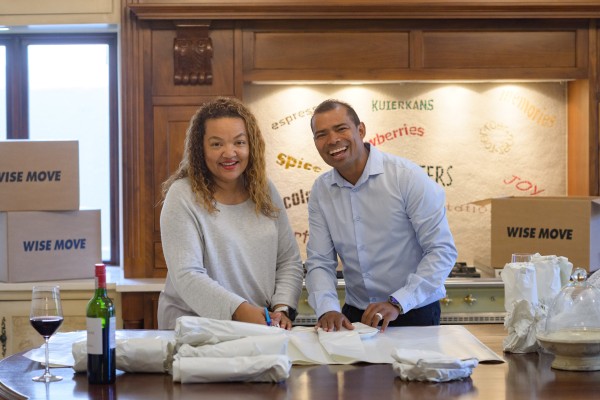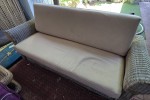
If you've ever wondered how much space a cubic meter actually takes up, don't worry - you're not alone. (Spoiler alert: it's bigger than you think)
Are you trying to plan your move, but not quite sure how much space you need in a moving truck? It sounds like you need a little help from the cubic metre!
Knowing what a cubic metre is (or cubic meter if you prefer), how to calculate one, and how many you need for a successful move will be a game-changer in planning your move. So let’s get started!
What is a cubic metre?
Wondering what is cbm? A cubic metre (cbm / m3) is a unit of volume that represents a cube in space with a height, width and depth of 1m and a volume of 1m3. It’s a form of measurement used to calculate how much space an object takes up.
Metric vs Imperial
For those of you used to the imperial system, the cubic metre translates to a cube with the height, width and depth of 3.2ft x 3.2ft x 3.2ft and a volume of 35.3ft3.
Cubic Metre and Space Planning
So how does this relate to planning the perfect move/storage? The cubic metre is useful in helping you know how much space is 1) available in say an empty truck - helping you choose the right truck size, 2) how much space your boxes will take up, and 3) once you’ve played a bit of Tetris, how much space the rest of your furniture will occupy.
The cubic metre is also the standard measurement that moving companies use to calculate a quote and require for organising your move. So the more you understand it, the better!
What can fit into a cubic metre?
Knowing what a cubic metre is, is one thing, but how big is a cubic metre really? And much stuff can fit into it? Let’s start by thinking about it in terms of moving boxes.
-
Moving Boxes
Looking at a standard moving box with the dimensions 50cm x 50cm x 45cm (or 20 x 20 x 18 inches), you can fit 8 standard moving boxes into 1 cubic metre. This can be a useful indicator, as you know that for every 8 boxes, you need 1 cubic metre of space in a truck or container.
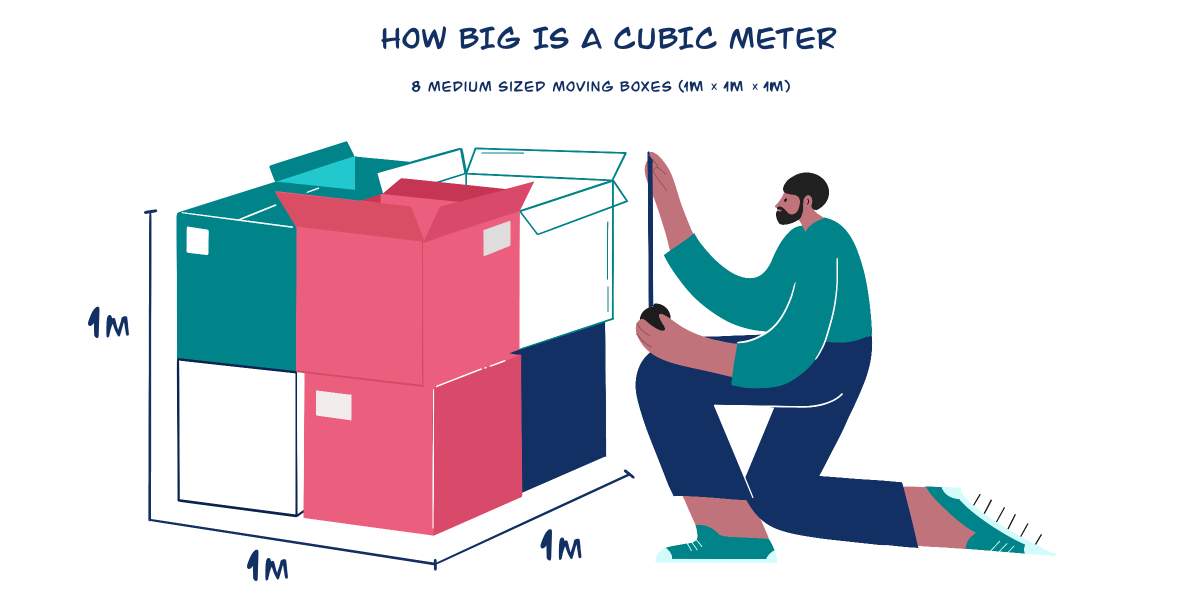
-
Household Furniture
Comparatively, we can also look at the typical volume of furniture items in terms of their volume in cubic metres.
The best way to do this is to imagine the item wrapped in a box. Any extra space can be filled with boxes of will be filled with protective blankets to make sure nothing gets scratched.
To make it all a lot easier to measure, Wise Move has a nifty tool to help determine the overall space your items will take.
Here are examples of some popular items and how much space they will take up when put together:
Living room:
-
Coffee table: 0.14m3 (4.8ft3)
-
Dining table: 0.52m3 (18.3ft3)
-
Armchair: 0.29m3 (10.4ft3)
-
TV: 0.02m3 (0.7ft3)
Office:
-
Bookcase: 0.3m3 (10.7ft3)
-
Desk: 0.57m3 (20.2ft3)
Kitchen:
-
Fridge freezer : 0.64m3 (22.7ft3)
-
Dishwasher: 0.3m3 (10.7ft3)
Bedroom:
-
Double bed: 1.68m3 (59.33ft3)
-
Wardrobe: 1.26m3 (44.5ft3)
-
Bedside table: 0.13m3 (4.6ft3)
-
Single bed mattress: 0.35m3 (12.23ft3)
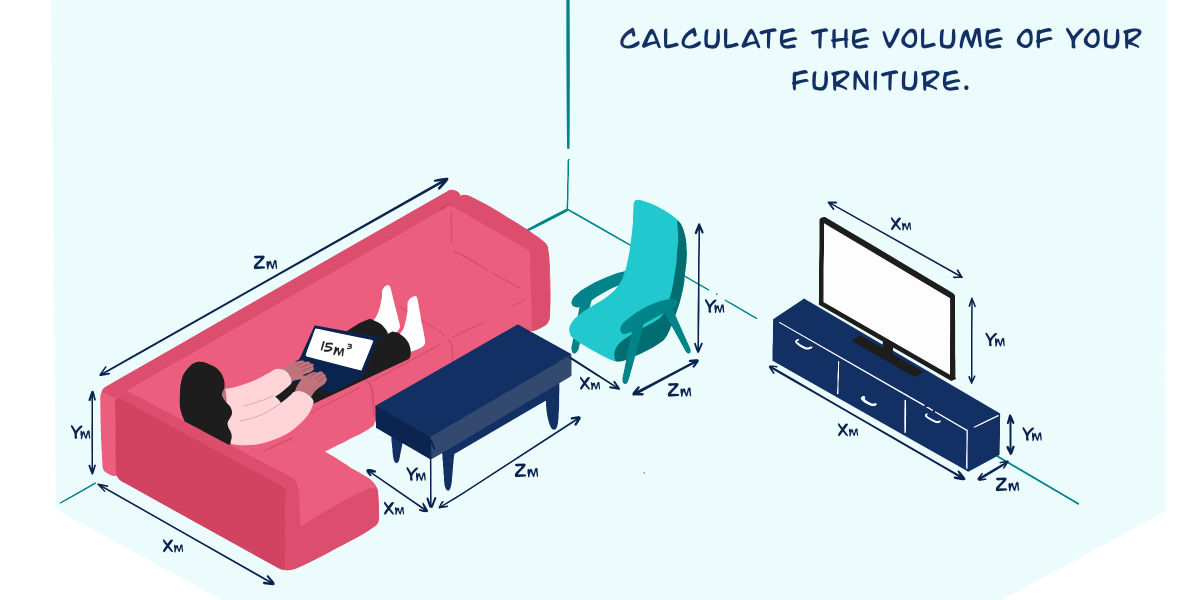
How to calculate the cubic metres of my furniture?
Calculating the cubic metres of your furniture is very easy:
-
Measure the height, width and depth of your furniture
-
Multiply the measurements together
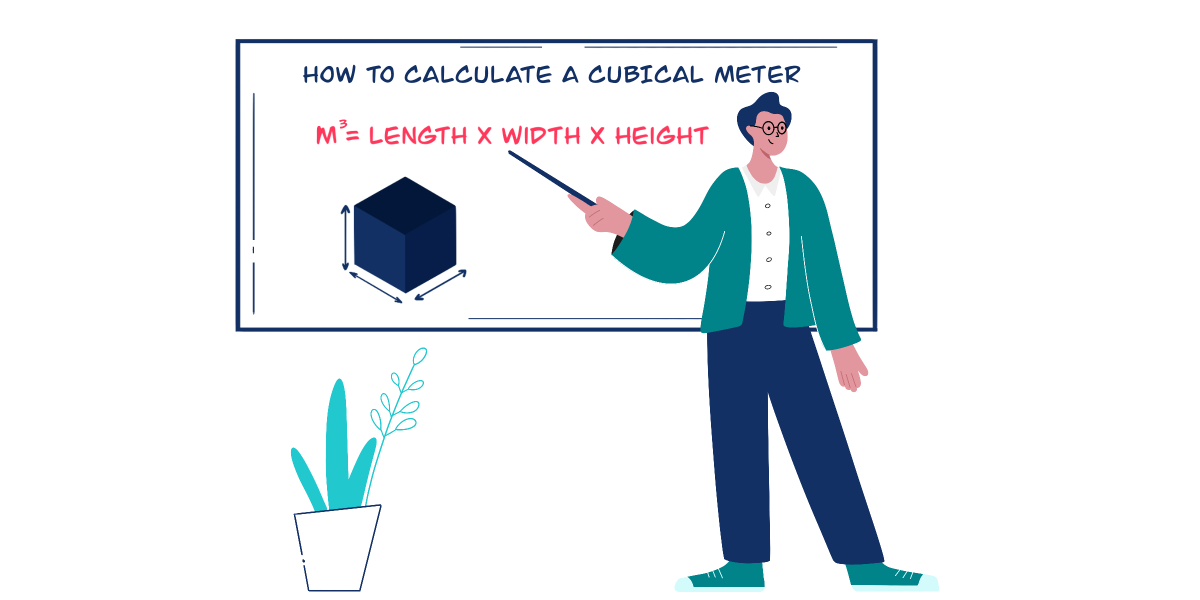
For example, the volume of a standard 3-seater couch with a height of 0.84m (2.75ft), a width of 2.1m (7ft) and a depth of 1m (3.3ft) can be calculated as follows: 0.84 x 1.5 x 1 = 1.76m3 (63.5ft3)
For your move, you’re going to want to calculate the total volume of all your goods. But, let’s face it - moving is stressful enough, no one has time for that! That’s why Wise Move has created a tool that will save you hours of your life: The Volume Calculator.
The volume calculator (or cubic metre calculator) is an invaluable tool that instantly calculates the total volume of your load. It takes the standard size of household objects, calculates their volume in cubic metres and totals them to give you the total volume of your load.
How much truck space or storage do I need for my move?
Here’s the big question: Now that you know how much space your goods take up, what size truck or storage unit do you need?
You want to make sure you choose the right truck or container that’s large enough to fit everything, but not too big that you waste money. It all becomes easy when you look at it in terms of cubic metres.
All you have to do is look at how many cubic metres your stuff takes up and compare it to the cubic metres of different trucks or storage containers.
To give you an indication, here are the standard volumes of common trucks and containers:
Trucks
-
4-ton Dropside: 25m3 (882.8ft3)
-
4-ton Panelvan: 18m3 (635.6ft3)
-
8-ton Panelvan: 38m3 (1 342ft3)
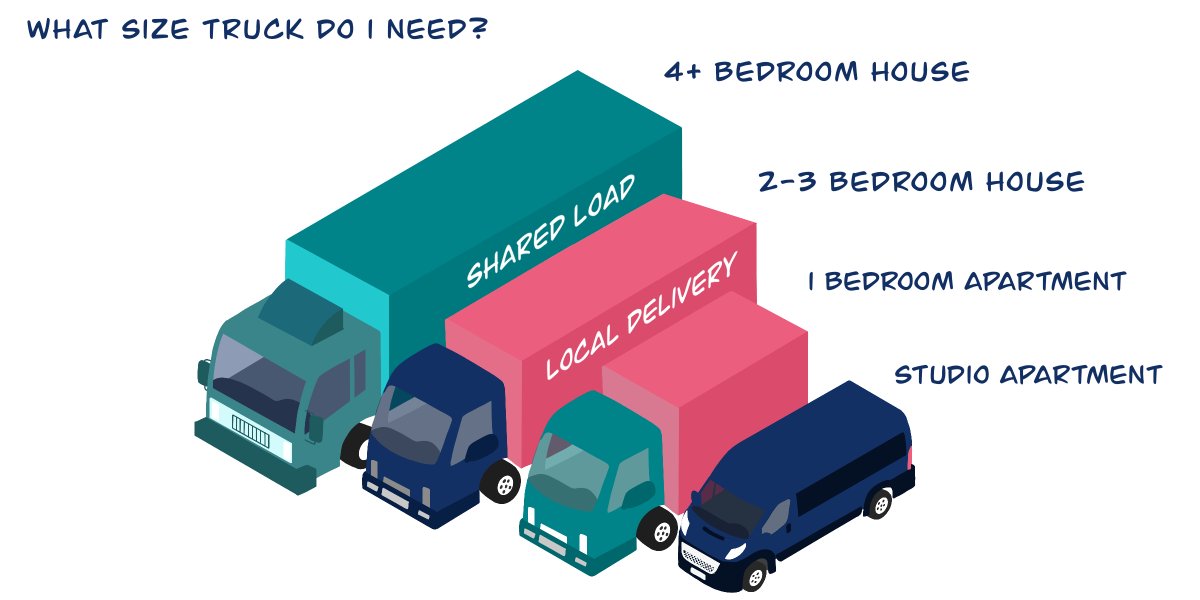
Containers
-
20ft Container: 33m3 (1 165.3ft3)
-
40ft Container: 67.7m3 (2 390.8ft3)
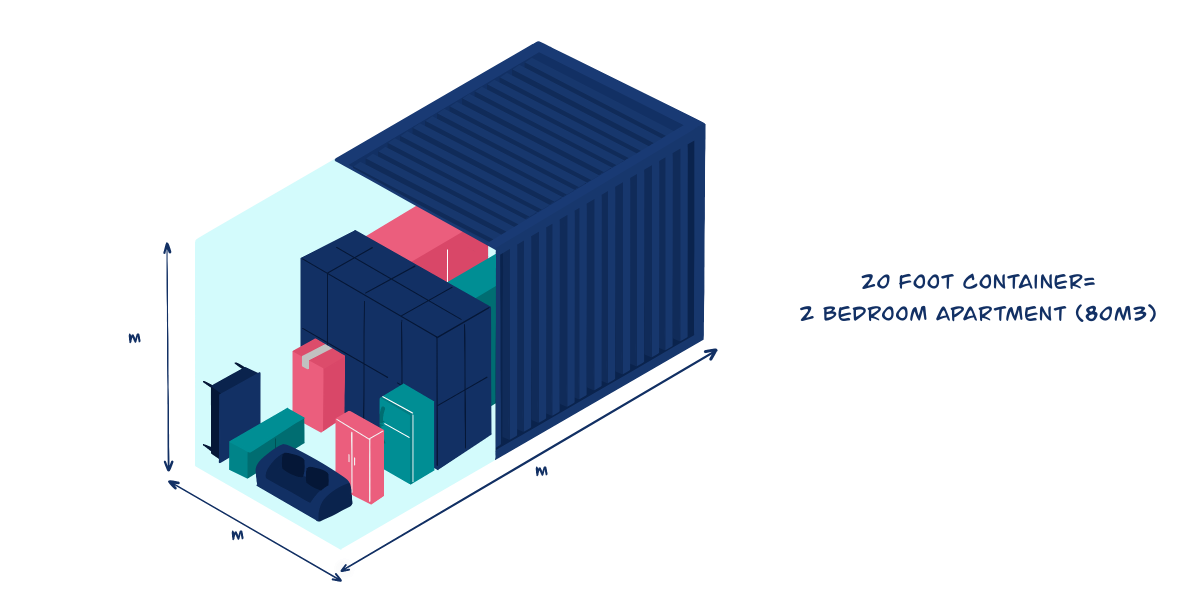
Storage Units
-
3m x 3m Storage Unit: 21.5m3 (7 59ft3)
-
3m x 6m Storage Unit: 43m3 (1 518.5ft3)
-
6m x 6m Storage Unit: 86m3 (3 037ft3)
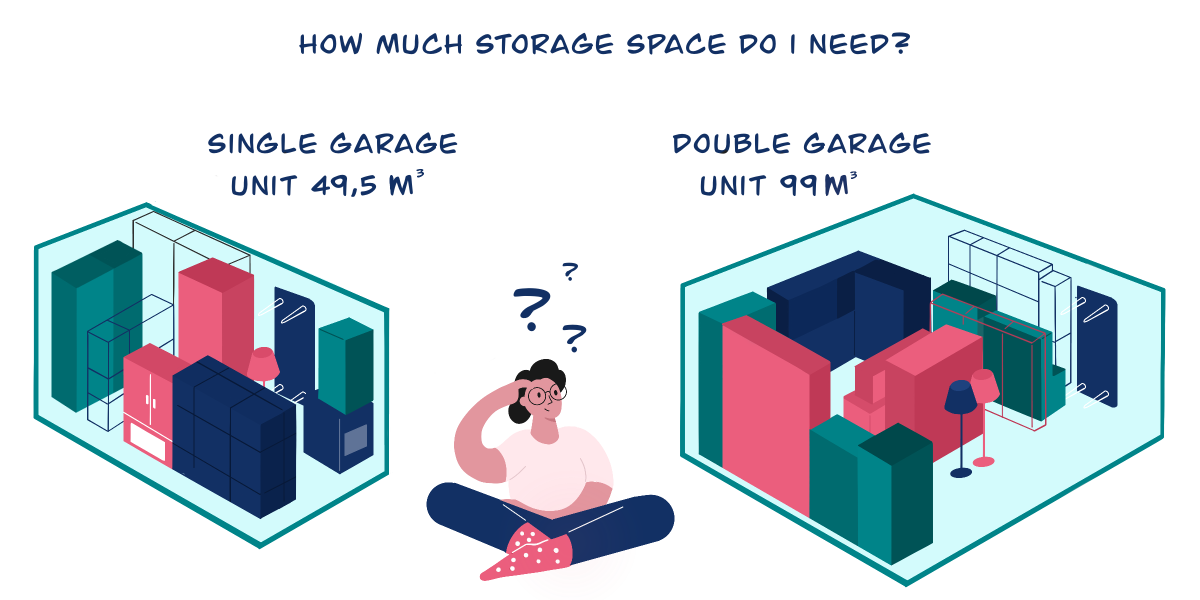
Another question to ask is if you really need an entire truck. If you can’t find a truck that suits the volume of your load, another efficient option is choosing a shared load. This is a very cost-effective option where you share a truck space and also split the costs.
What is m3 - FAQ
What is the meaning of 1 cubic metre?
When it comes to moving services, 1 cubic meter is a unit of measurement used to determine the volume of goods being moved. It represents a space that measures 1 metre in length, 1 metre in width, and 1 metre in height.
For example, if you are moving furniture and other household items, a moving company may use the measurement of cubic metres to estimate the amount of space your belongings will take up in their truck or storage unit.
This information can be useful in determining the cost of the move, as well as the size of the vehicle or container needed to transport your items.
It's important to note that the actual amount of space your belongings take up may vary depending on their shape and size, and the way in which they are packed. Therefore, it's always a good idea to work with a reputable moving company that can provide you with accurate estimates and help you plan your move accordingly.
How do you calculate cubic metres?
To calculate cubic metres, measure the length, width and height of the object or space in metres, and then multiply those dimensions together (L X W X H = CBM). It's important to note that you may need to convert measurements from other units to metres before making the calculation.
What is a cubic metre example?
Let's say you want to rent a storage unit to store your belongings. You measure the unit and find that it measures 3 metres in length, 2 metres in width, and 2.5 metres in height.
To calculate the cubic metres of the storage unit, you would multiply 3m x 2m x 2.5m to get 15 cubic metres. This means that the storage unit has a volume of 15 cubic metres, which can help you determine how much it can hold and whether it is the right size for your needs.
How much truck space do I need for my move?
The best way to calculate how much space you need in a truck is to use a volume calculator. Typically, one fully furnished room needs 4 - 5 cubic meters of space, but this is only a general estimation.

Conclusion
The cubic metre is actually very simple, and it can be super useful when it comes to planning your move. And, with the help of Wise Move’s trusty volume calculator, you can calculate your entire load in cubic metres in minutes!
But now that you know the space you need in a moving truck, the question now is which moving company do you use? Wise Move is the best way to get affordable and reliable moving services where no delivery is too big or too small.

![How Many Moving Boxes Do You Need [Quick Guide] How Many Moving Boxes Do You Need [Quick Guide]](https://cdn.wisemove.co.za/image/blog/f402bbe3e47e09aa41a6d8370888b926.jpeg)
![How Many Moving Boxes Do You Need [Quick Guide] How Many Moving Boxes Do You Need [Quick Guide]](https://cdn.wisemove.co.za/image/blog/b79a631331a7368c917d2bf5d1490f12.jpeg)




